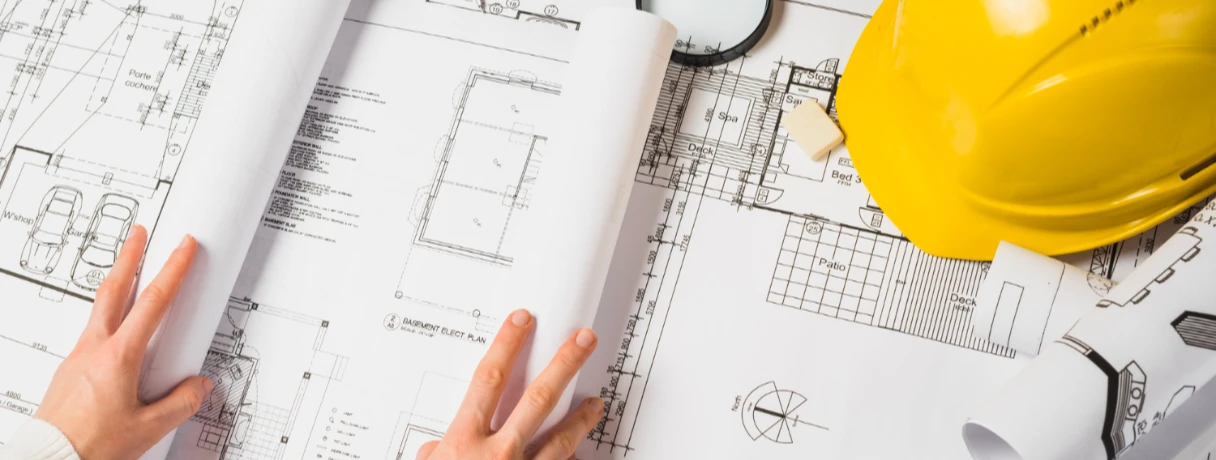Construction estimating has always been a high-stakes balancing act. Every detail matters, and even small errors can derail budgets, delay schedules, or hurt profitability. And when estimators rely on manual takeoffs, spreadsheets, and incomplete data, the estimating process becomes even slower, repetitive, and prone to mistakes.
Today, AI in construction estimating is changing that. By automating repetitive tasks, analyzing vast datasets, and integrating real-time cost updates, AI is helping estimators work faster and more accurately. The result: fewer overruns, more competitive bids, and better project outcomes.
AI takes construction estimating even further by automating quantity takeoffs from digital plans, analyzing historical data for more accurate cost predictions, and providing predictive insights for project outcomes, resource allocation, and risk management. By reducing manual work and minimizing errors, AI not only speeds up the bidding process but also frees estimators to focus on other higher-value tasks, such as business strategy, resource optimization, and client collaboration..
In this blog, we’ll explore how AI is reshaping construction estimating, from automating takeoffs to predictive forecasting, and why it’s quickly becoming a must-have in every estimator’s toolkit.
The Challenges in Construction Estimation
Estimators deal with massive amounts of data—plansets, specifications, cost databases—while racing against bid deadlines. Common challenges include:
- Manual takeoffs that eat up hours and lead to errors
- Misinterpretations of drawings or inconsistent specs
- Outdated data leading to underbids or overpricing
These hurdles drain time that can be spent elsewhere, and increase the risk of losing bids. That’s where AI-powered cost estimation steps in—cutting down manual work so estimators can focus on strategy and decision-making.
The Impact of AI on Construction Estimation
AI is transforming construction estimating by automating quantity takeoffs by analyzing plan data and specs. This not only makes estimates more accurate but also frees estimators to focus on other high-priority tasks.
Human oversight is still important to catch errors, handle data issues, and manage details AI might miss. AI also enhances collaboration by making information easier to share and providing clear, data-driven insights, helping teams create more competitive and profitable bids.

1. Automation of Takeoffs
In the construction estimation, everything starts with material takeoffs. Accurate takeoffs provide the foundation upon which reliable estimates are built. However, this critical process often consumes so much time that it leaves little room for other essential activities, such as refining estimates through value engineering or coordinating with clients.
AI-based tools like Beam AI automate the entire takeoff process, instantly delivering bid-ready outputs, ready to be used for estimation or sent in proposals. Estimators no longer spend hours manually clicking polygons or measuring drawings—instead, they get fully done takeoffs, without any manual effort.

2. Enhanced Data Analysis and Summaries
Estimators often juggle thousands of pages of specs and drawings. AI in construction estimating can scan and read through all details without any manual effort.
This means estimators can:
- Do not spend time doing takeoffs, and focus on other high-priority tasks like vendor management, training, stakeholder management, site visits, etc.
- Identify risks or missing details
- Build more accurate estimates from the start by getting accurate takeoffs that take half the time.
3. Real-time Data Integration
In a fast-moving market, stale data is a liability. AI pulls in real-time updates on material pricing, labor rates, and availability.
Benefits include:
- Bids that reflect current market conditions
- Faster response to bid invitations
- Competitive edge by being first to submit accurate proposals
4. Automated Scope Identification
Identifying the full scope of work in a construction project is essential, as overlooked details can cause significant issues later. Traditionally, estimators had to painstakingly review project documents to manually identify and categorize every aspect of the work, a process prone to errors and very time-consuming.
AI in construction estimating has revolutionized this task by automating scope identification. Advanced AI tools can now scan construction plans and automatically categorize the scopes of work, ensuring that nothing is overlooked.
5. Predictive Analytics for Cost Estimation
Perhaps the most powerful application of AI in construction estimation is predictive forecasting. By analyzing historical and current data, AI can:
- Anticipate material price fluctuations
- Identify labor shortages or rising wage trends
- Flag supply chain risks before they hit
This foresight enables estimators to adjust bids proactively, protect margins, and reduce surprises mid-project.
Before you go
The impact of AI on construction estimation is significant. As the industry continues to adopt these technological advancements, the role of the estimator is evolving as well. A common misconception is the fear that AI will eventually replace human estimators. However, this is far from the truth. AI is not designed to take over jobs but to enhance the role of estimators by automating repetitive, time-consuming tasks that often slow down their work.
The true value of an estimator lies in the critical thinking, judgment, and expertise they bring—skills that AI cannot replicate. AI acts as an extension of these capabilities, streamlining processes and providing precise data, which allows estimators to make more informed decisions and achieve better project outcomes.
As AI-powered tools like Beam AI become increasingly integrated into daily workflows, the benefits will continue to grow, leading to greater accuracy and more competitive bids. The future of construction estimation is promising, and those who embrace AI will be better prepared to meet the challenges and opportunities ahead.














.webp)

